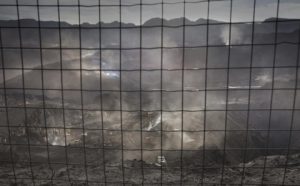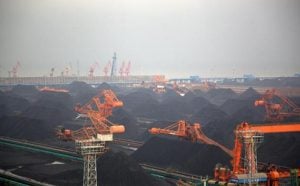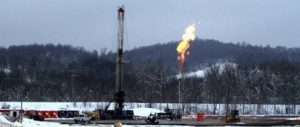China’s National Energy Administration (NEA) is used to a winter peak in natural gas demand, but this winter could be particularly difficult.
Government efforts to control air pollution by reducing coal use has led to a higher demand for natural gas. What’s unclear is whether China’s natural gas supplies and infrastructure will be able to cope with a sudden surge in demand.
In China, natural gas is a cleaner rarer source of energy, and as such has been seen as something of a luxury. But with a question mark over nuclear safety and wind power still hampered by poor grid connections, natural gas is the fuel of choice to help meet air quality targets.
By 2015 Beijing plans to have converted all large industrial and commercial coal-burning facilities within the 6th Ring Road to cleaner fuels, and to have done so across the entire city by 2016. The provincial capital of Hebei, Shijiazhuang, aims to have converted coal-fired furnaces, boilers and factory power-plants to natural gas by the end of 2017.
Even the southern province of Guangxi, despite its lack of natural gas reserves, has committed to investing 61 billion yuan in natural gas pipelines and infrastructure for smaller cities, counties and city districts, with the aim of piping gas to all its counties by the end of 2017.
Yet industry experts complain that resource shortages make a large-scale switch to natural gas in the next five years hugely problematic.
Although a nationwide shortage of natural gas in 2009 was widely blamed on energy monopolies and price controls, the NEA said at the time that the main problem was lack of supply.
Beijing has been replacing coal with natural gas for years, even before the heavy smogs of 2013. But this could not have been done without four new pipelines bringing gas from Shaanxi, and the security of supply provided by China’s largest gas field at Changqing, in northwestern Gansu province, giving Beijing better natural gas supplies than any other Chinese city. Even so, many regard Beijing’s targets as unrealistic. Other cities will struggle to emulate Beijing’s successes.
Even Zhang Guobao, former NEA head and an advocate of Beijing’s approach, once told the media that the conditions were not yet in place for a nationwide conversion of power plants to natural gas.
And that is just the problem. China saw annual pressure on natural gas supplies even before heavy smog prompted coal cuts – Liu Tienan, another former NEA head, once said that “with lots of new customers and rapidly increasing consumption, our ability to store gas to meet peak demands is limited.”
Shale gas is not the answer
China’s per-head natural gas reserves are only 7% of the global average, and it has to import large quantities of the fuel – 30% of total consumption. Increases in consumption are outstripping extra production, and imports are being used to make up the widening gap.
The pressing need for more gas has the Chinese government considering more coal gasification projects. Recently a number of such projects in Inner Mongolia and Xinjiang have been given the go-ahead – after a round of demonstration and pilot projects, the technology is ready for large-scale commercial implementation. But if this is rushed there is a risk of damage to water resources and the environment.
Meanwhile, shale gas in China is still not commercial, despite 20 years of development. In 2010 shale gas production in China was less than 10 billion cubic meters, missing the 11th Five Year Plan targets. In 2012 14.1 billion cubic meters were extracted, with 5.8 billion used, again undershooting that year’s target. Production in 2013 was 16 billion cubic meters, still far off the 2015 target of 30 billion cubic meters. Shale gas production is still limited and will not play a major role.
Another route to increasing natural gas supplies is the import of costly liquefied natural gas. But price controls mean that the companies doing so have to sacrifice their economic interests for the sake of fulfilling political objectives.
It is easy to predict that if local governments ignore the upstream realities and continue with the switch to natural gas, shortages this winter may be inevitable, with high-ranking delegations again descending on Beijing to lobby for higher gas allocations. Beijing’s special political status means it can rely on support from the NEA and the energy companies – but other administrations will struggle to increase their gas quotas.
This is an edited version of an article that was first published in the 21st Century Business Herald






